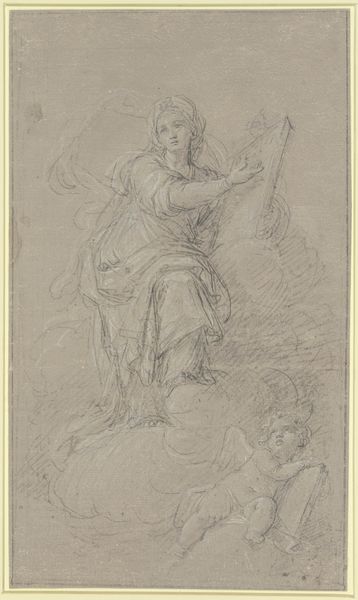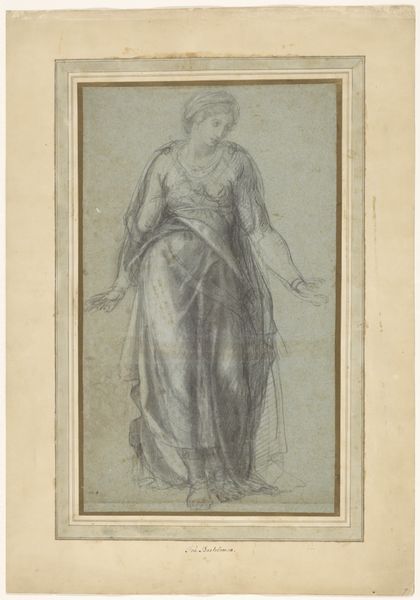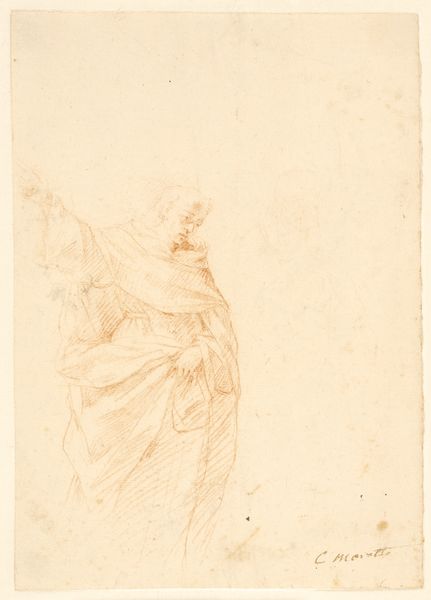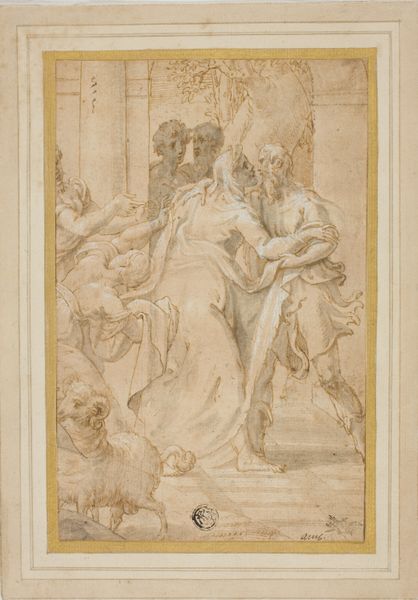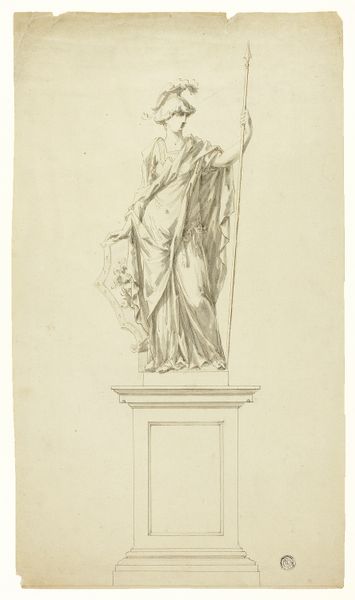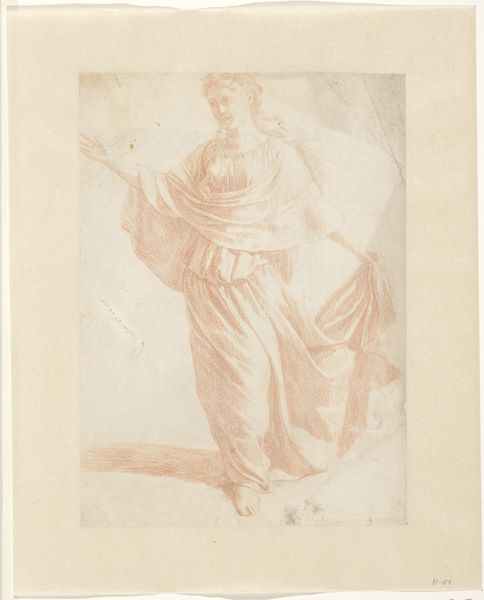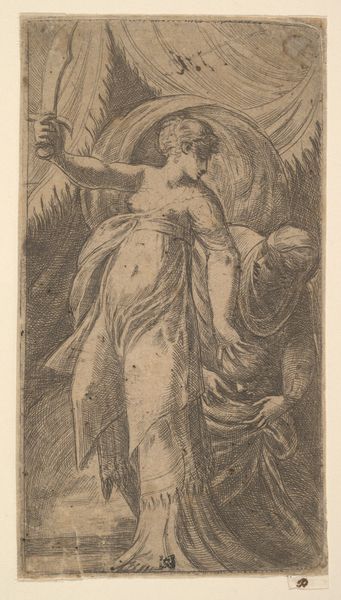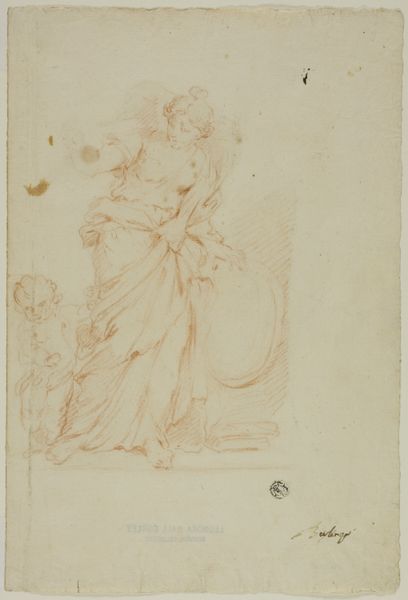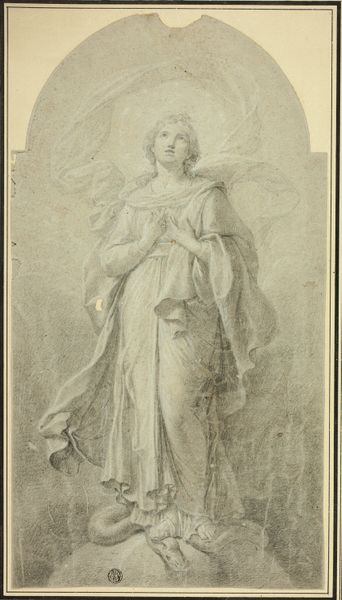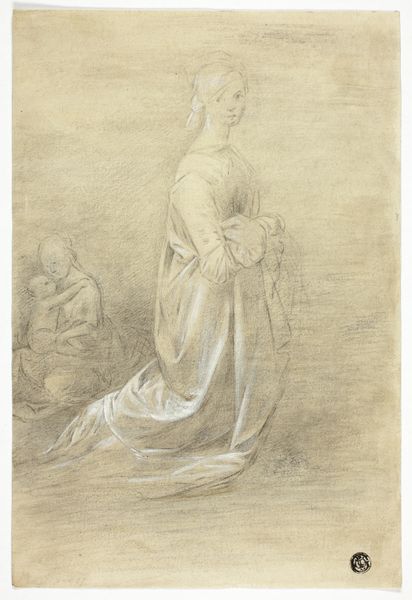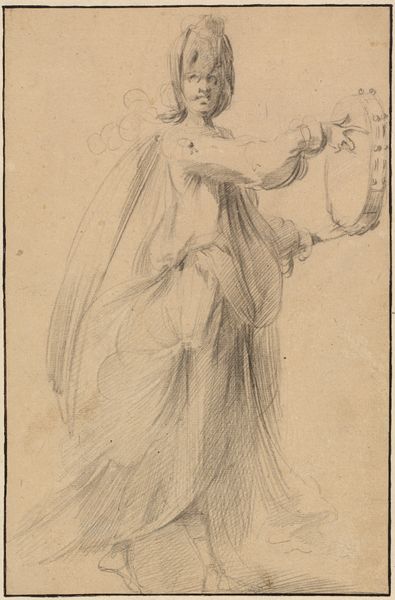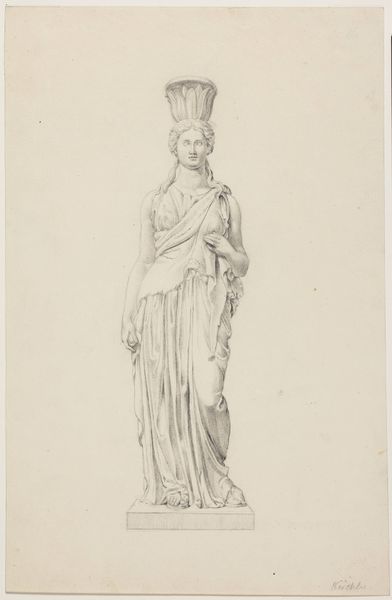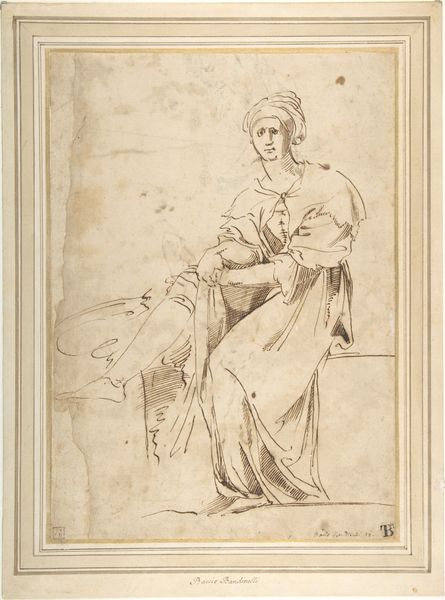
drawing, red-chalk, paper
#
portrait
#
drawing
#
baroque
#
red-chalk
#
figuration
#
paper
#
coloured pencil
#
history-painting
#
academic-art
Copyright: Public Domain
Curator: Guido Reni’s “Judith mit dem abgeschlagenen Haupt des Holofernes,” located at the Städel Museum, arrests my attention. The red-chalk drawing is powerful in its delicate presentation. Editor: Indeed. There’s a subdued yet haunting quality to it, wouldn’t you agree? The monochrome palette of red chalk on paper really lends it a raw, almost visceral feeling. What can you tell us about its construction? Curator: Reni here grapples with the legacy of female empowerment and violence in artistic depictions throughout history. Judith, as a figure, embodies defiance against patriarchal oppression and colonial power. Editor: Looking at the rendering here, particularly in the drape of the fabrics and the meticulous detail given to Judith’s features, there is a striking intersection of classical composition and early modern craftsmanship. I would like to add to your reading, speaking on the labour, this medium offered unique opportunities to create depth and shadow with minimal tools. Curator: This rendering demands consideration regarding female agency and historical narratives. The male gaze is, traditionally, heavily implicated in renderings such as these and therefore opens dialogue about gender, representation, and the violence perpetrated by women throughout art history. Editor: Right, and the visible, textured marks made by the artist— the hatched strokes building form—all remind us of the act of creation, a material dialogue between the artist and the story being depicted. It invites us to contemplate the means by which the piece came to be, echoing into broader consideration on who benefits in its sale, display, and consumption. Curator: It ultimately acts as a crucial juncture to consider the intertwined legacy of violence, faith, and the complicated realities faced by women across eras and cultures. Editor: Seeing the economy of means here gives me a renewed appreciation for the materials themselves. This allows us a moment to remember the labour involved not only in making art but the value ascribed, both artistically and financially. Curator: And perhaps most compelling, is the ability to provoke this dialogue even centuries after its genesis. Editor: An impressive feat for a single-colour chalk drawing.
Comments
No comments
Be the first to comment and join the conversation on the ultimate creative platform.
